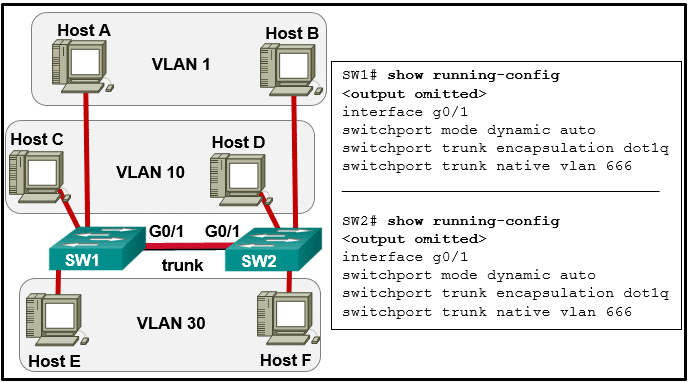Refer to the exhibit. The network administrator configures both switches as displayed. However, host C is unable to ping host D and host E is unable to ping host F. What action should the administrator take to enable this communication?

- Associate hosts A and B with VLAN 10 instead of VLAN 1.
- Configure either trunk port in the dynamic desirable mode.
- Add the switchport nonegotiate command to the configuration of SW2.
- Include a router in the topology.
- Remove the native VLAN from the trunk.
| Explanation & Hint:
The exhibit shows the configuration of the trunk links between two switches, SW1 and SW2. Both switches have their trunk ports set to “dynamic auto” mode and are using VLAN 666 as the native VLAN. Hosts C and D are on VLAN 10, while Hosts E and F are on VLAN 30. Since Host C is unable to ping Host D and Host E is unable to ping Host F, there appears to be an issue with VLANs communication across the trunk link. Here are the potential issues and the actions that could resolve the communication problems:
Based on the output and the possible issues, the action that the administrator should take to enable communication between Host C and Host D as well as Host E and Host F is likely: Configure either trunk port in the dynamic desirable mode. This will actively attempt to form a trunk. It is important to note that “dynamic auto” mode will not form a trunk unless the other end is in “dynamic desirable” or “trunk” mode. Setting one end to “dynamic desirable” will initiate trunking and allow traffic from VLANs 10 and 30 to pass through. |